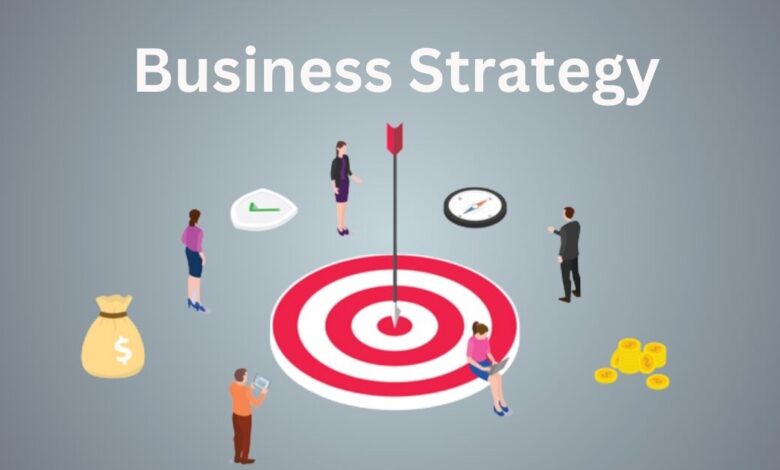Creating a Successful Business Strategy for Organisations

Every organisation aims for growth and prosperity. However, turning ambitions into tangible results requires more than just good intentions. It demands a clear roadmap that guides decision-making and resource allocation.
A well-crafted approach serves as the foundation for sustainable growth. It helps leaders define what value means for their company and all stakeholders. This includes customers, employees, and supply chain partners.
According to Harvard Business School Online, effective planning centres on three crucial questions. How can we create value for customers? How can we create value for employees? How can collaboration with suppliers generate additional value?
This comprehensive framework provides a competitive advantage in today’s dynamic markets. It determines critical factors like pricing, recruitment, and resource management. Without this strategic direction, organisations struggle to achieve their long-term goals.
Key Takeaways
- A clear strategic plan is essential for organisational success and market competitiveness
- Effective planning requires deliberate action rather than just having business ideas
- Value creation must extend to customers, employees, and supply chain partners
- Strategic direction helps determine pricing, recruitment, and resource allocation
- UK organisations must consider local market characteristics when applying universal principles
- Without a coherent approach, companies cannot create sustainable value
- This guide explores frameworks for developing robust strategies that deliver measurable results
Defining Business Strategy for Modern Organisations
The evolution of corporate planning reflects a journey from simple production goals to complex value creation. Historically, the primary focus was on operational efficiency and output volume. Over time, this approach has transformed significantly.
Historical Perspectives and Evolution
Early industrial-era methods prioritised maximising production above all else. The development of strategic thought introduced a greater emphasis on sustainable advantage and stakeholder engagement. This change was driven by new market dynamics and technological advancement.
Modern frameworks are inherently more flexible and responsive. They must adapt to globalisation and evolving expectations from customers, employees, and suppliers.
Core Components and Frameworks
A robust organisational plan serves as a master course of action. It outlines specific decisions for positioning and achieving goals. This plan draws heavily on the company’s mission and vision.
One influential modern framework is the value stick. Professor Felix Oberholzer-Gee developed it at Harvard Business School. The framework highlights how value is created through key differences.
- Willingness to Pay (WTP): The maximum price a customer accepts.
- Price: The actual charged amount for goods or services.
- Cost: The expense of required raw materials.
- Willingness to Sell (WTS): The minimum amount suppliers or employees will accept.
The gap between each component represents value for a different stakeholder. A primary objective is to widen these gaps over time. This concept is central to contemporary strategic development.
Incorporating Successful Strategies to Drive Growth
Achieving significant growth frequently stems from an innovative approach that redefines a market’s rules. Examining real-world examples shows how organisations translate plans into measurable outcomes. These cases highlight the importance of creating unique value.
Case Studies of Successful Strategies
Several organisations demonstrate powerful growth through distinct methods. HubSpot, for instance, pioneered inbound marketing. They educated their audience on a new paradigm, creating a category that did not previously exist.
Apple differentiated its iOS platform by prioritising simplicity and user experience. This focus built a loyal customer base and set its products apart. The firm applied a similar philosophy across its entire ecosystem.
Gravity Payments took a radical step by raising its minimum wage significantly. This decision enhanced employee satisfaction and productivity. It also generated substantial positive publicity, leading to tangible business growth.
These examples share a common thread: a bold move that creates value in a novel way.
Aligning Strategic Goals with Market Trends
A successful business strategy must evolve with the landscape. Organisations need to monitor customer preferences and competitor actions continuously. This vigilance helps identify new opportunities for expansion.
The ultimate goal is to position an organisation’s offerings to resonate deeply with its audience. This alignment ensures the plan remains relevant and effective. It drives sustainable results like increased market share and improved customer retention.
Key Considerations for Strategic Planning in Organisations
Navigating today’s complex market landscape demands a systematic approach to planning that incorporates thorough analysis. Organisations must balance immediate operational needs with long-term vision.
This process requires continuous evaluation and adjustment. Effective planning ensures teams have clear direction and necessary support.
Identifying Competitive Advantage
A SWOT framework helps organisations understand their position. This analysis examines strengths, weaknesses, opportunities, and threats.
Companies can achieve advantage through cost leadership or differentiation. Focused approaches targeting specific niches also prove effective.
Regular research keeps organisations aware of market shifts. This knowledge informs strategic adjustments and maintains relevance.
Resource Allocation and Risk Management
Distributing financial, human, and technological resources requires careful planning. Leaders must balance short-term needs with strategic investments.
Key performance indicators measure progress toward objectives. They enable data-driven decisions about resource allocation.
Risk management identifies potential disruptions early. This proactive approach helps organisations adapt to changing circumstances effectively.
Leveraging Successful Strategies UK for Competitive Advantage
Organisations across the United Kingdom face a unique set of market conditions that demand tailored approaches. A key differentiator for many is the effective application of specific strategic frameworks. These approaches help companies stand out and secure a lasting market position.
Real-World Examples: Successful Strategies UK in Action
British companies often use differentiation to highlight unique product features or superior services. This creates significant value for their target customers. Other firms pursue growth plans to expand into new regions or introduce innovative products.
Acquisition is another powerful method. It allows organisations to gain new skills, technologies, and market share rapidly. These Successful Strategies UK demonstrate how careful planning leads to measurable results, such as increased sales and stronger brand loyalty.
Sustainable Growth Through Innovative Practices
Long-term success now hinges on balancing profitability with social and environmental responsibility. UK customers increasingly favour brands that align with their values. This shift requires a forward-thinking vision from leaders.
Integrating innovative practices, such as those focused on operational excellence, is crucial. It ensures efficient resource use while meeting customer expectations. Continuous adaptation and research are vital for maintaining a competitive edge.
Ultimately, the most effective Successful Strategies are those that evolve. They respond to changing market dynamics and customer preferences. This agile approach is a hallmark of a modern, resilient organisation in the UK.
Conclusion
The journey from strategic conception to tangible results demands disciplined implementation and continuous refinement. A robust business strategy serves as a living framework that must adapt as market conditions evolve.
Successful execution requires clear goals, measurable objectives, and proper resource allocation. Organisations must establish key performance indicators and regularly monitor progress against their plan.
Continuous learning through professional development ensures leaders stay current with best practices. Ultimately, sustainable success depends on creating distinctive value for all stakeholders while maintaining competitive advantage over time.
FAQ
What is the primary purpose of a business strategy?
The main aim is to provide a clear roadmap for an organisation. It outlines how the company will achieve its long-term objectives, secure a competitive advantage, and create value for its customers and stakeholders.
How often should a company review its strategic plan?
Most organisations conduct a formal review annually. However, in fast-changing markets, leaders may assess their strategic goals more frequently to adapt to new opportunities or threats.
What is the difference between a strategic plan and a business plan?
A business plan typically focuses on starting a new venture or securing funding, detailing products, sales, and marketing. A strategic plan is broader, guiding the entire organisation’s direction, growth, and development over a longer period.
How can a small company develop a successful strategy?
Small companies should start with thorough market research to understand their target audience. They can then focus on a niche, leverage their agility, and allocate resources wisely to build a strong brand and achieve their goals.
What role does competitive analysis play in strategic planning?
It is crucial. Analysing competitors helps an organisation identify its unique advantage, understand market trends, and spot opportunities for differentiation. This analysis informs decisions on product development and market positioning.
Can you give an example of a successful UK business strategy?
A notable example is Tesco’s Clubcard loyalty scheme. By leveraging customer data, Tesco gained deep insights into shopping habits, which allowed for highly targeted marketing and a significant competitive edge in the retail sector.



